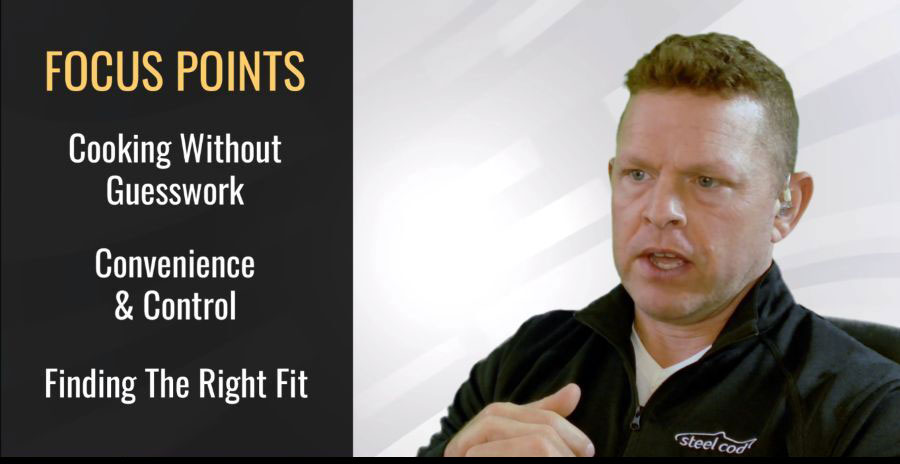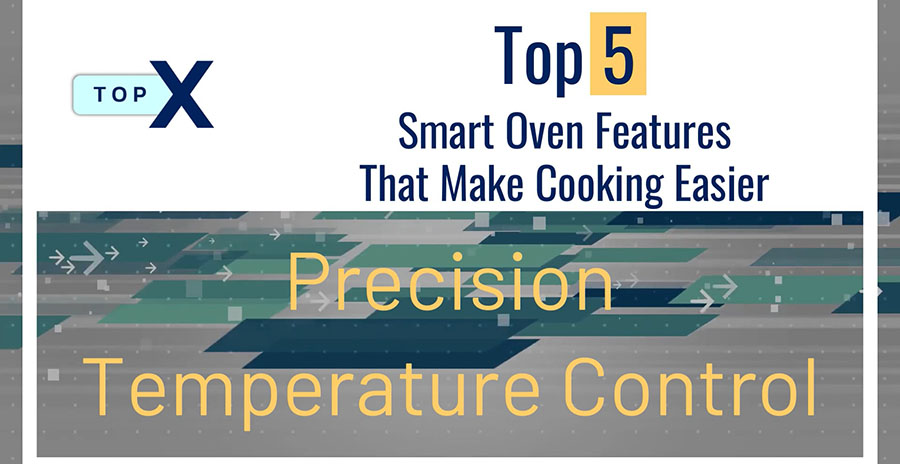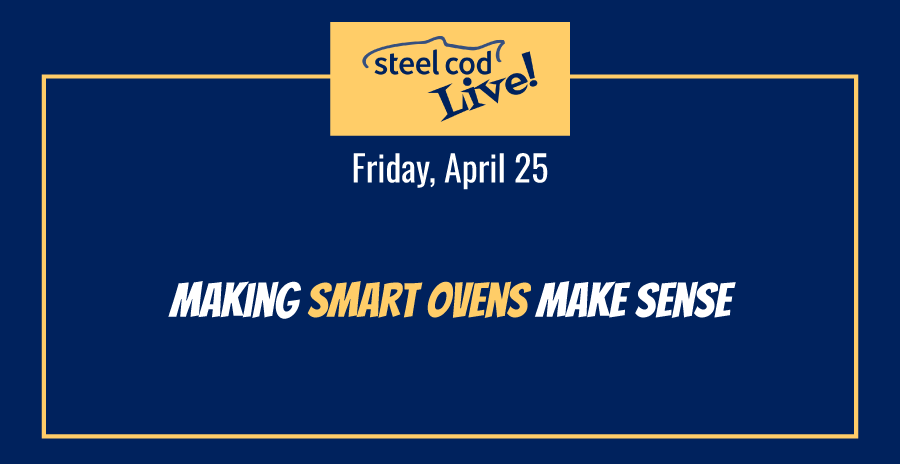Smart Ovens
Do They Actually Make Cooking Easier or Just More Complicated?
Smart Ovens
Smart ovens promise convenience, precision, and better cooking results, but not every customer is convinced. Some wonder if smart features actually make cooking easier or just add complexity to something that used to be simple. This week we separate gimmicks from game-changers and uncover what truly makes a smart oven worth it.
Top 5 Smart Oven Features That Make Cooking Easier
Not all smart ovens are created equal — and not every “smart” feature makes life easier. In this episode, we cut through the noise and spotlight five smart features that deliver real, measurable value. From temperature sensors that adjust heat in real time to guided cooking systems that set everything for you, this Top X gives you the tools to start better conversations on the floor.
Making Smart Ovens Make Sense
This week on Steel Cod Live!, Anthony, Tom, and Jon close the loop on smart ovens—and are putting everything we’ve covered into real-world selling context. From how to explain precision temp control to decoding the difference between guided programs and gimmicks, we’ll show you how to take what you’ve learned and turn it into stronger conversations on the floor.
Recap
Key Questions and Answers
What’s the best way to demo a smart oven without overwhelming the customer with tech?
The most effective approach is to skip the features and walk them through a simple real-world scenario — like cooking salmon or reheating pizza — so they can immediately see the benefit. Over 60% of customers say they better understand smart appliances when the experience is framed around outcomes, not specs.
Do smart features add risk for service calls or maintenance issues over time?
Not with current-generation models. Wi-Fi systems are isolated from cooking hardware, and fewer than 3% of service calls on smart ovens involve connectivity. Most issues still come from physical components, not software.
Where is smart oven technology heading over the next 5 years?
The next wave is automation: camera-assisted cooking, moisture sensing, and real-time temp control. Smart cooking appliances are projected to grow over 22% annually through 2028, with AI-driven cooking becoming the norm in premium segments.
Are app-connected cooking programs actually updated, or do they stay static after purchase?
It depends on the brand. Some push frequent app updates, while others ship fixed recipe libraries. Brands that update regularly see 30–40% higher app engagement and longer-term satisfaction.
How long does it take customers to get comfortable using smart modes?
With a proper walkthrough, most users become comfortable within 1–2 weeks. Without that support, many never use them. A brief demo during delivery or install can dramatically increase adoption.
Is there a risk of “smart fatigue” with customers who feel bombarded by features?
Yes — but only if the conversation leads with features instead of benefits. When you frame smart modes as time-savers or mistake-proofing tools, they become assets, not burdens.
Is it risky to push smart ovens to customers who aren’t asking for them?
Only if you oversell the tech. Over 70% of smart oven buyers weren’t seeking smart features initially — they were sold on what it made easier. The key is to reposition it as optional convenience, not required complexity.
Which smart features create the most long-term satisfaction — and how should I sell them?
Food probes, remote preheat, and guided cooking drive the highest satisfaction scores. Don’t lead with what they do — lead with what they prevent: guesswork, dry food, overcooking. “It doesn’t just connect — it gets it right.”


